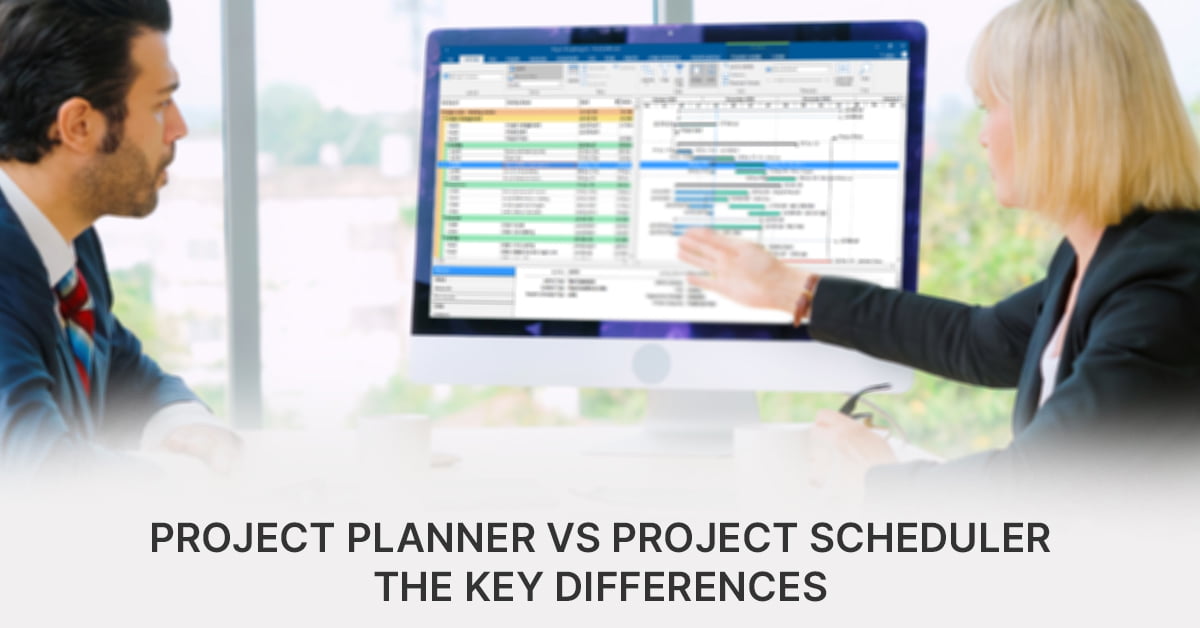A project planner and a project scheduler are two concepts that are frequently used interchangeably to refer to the same profession or role.
If you have ever worked in a project-based environment, you have surely encountered instances where the schedule or plan are being referred to as the same document.
Although it is often the case that all these terms are being used synonymously, there are a lot of key differences that set these concepts apart. Let’s explore their definition, use, and importance.
What is Planning and What is Scheduling
Planning
The first step of planning lies in creating a strategy. All plans in an organization start with strategic planning that focuses on the WHY.
Planning is an essential process and lies in the foundation of any project. Planning is needed to support the strategy and the larger picture of the organization’s goals; hence it focuses on the What and the How. In other words, planning is all about preparing for the work upfront.
Planning answers the important questions about the projects and dictates key factors including defining the project scope, timeframe, budget and how the project should be executed. It identifies possible constraints and delivery methods, costs, resources and materials needed, the stakeholders involved and their relations with the project, risks and returns, as well as other similar internal and external factors that influence the project.
The outcome of the planning process is often a deliverable or a “plan” that states the project is ready to start, allowing the next process of scheduling to start. The “plan” can also hold several deliverables such as referring to the key elements contained within, such as risk assessment plan, stakeholder management plan etc.
Scheduling
Following the process of planning comes the scheduling process with a clear focus on the Who and the When.
As the scope and timeframe of the project is defined in the planning process, the scheduling further breaks down the timeframe of the project into details.
Scheduling is about organizing the sequence of activities and allocating the resources and materials across time to complete the defined project goals.
It is a process of neatly organizing all elements and actors in the project in a coordinated manner that ensures the project is executed in the most efficient way.
The “project schedule” is a deliverable that is an output from the scheduling process.
The schedule is a key deliverable in the project that essentially transforms the project vision into an actionable, time-based plan. It provides a base to monitor and control the execution of project activities, helps determine the most efficient allocation of resources at specific points in time, and helps determine how potential delays will impact the project.
The schedule is a live document, continuously updated throughout the project lifecycle, and it is used as key reference to support various project decisions that drive the project forward.
Scheduling also deals with outlining each project participant’s individual roles and responsibilities across time, which project participants can get familiarized with through the schedule.
Planner vs Scheduler
In smaller organizations, one person can execute the role of a planner and scheduler. As the organization grows and delivers value, it is important to keep these roles separate and have a clear understanding of the difference between the responsibilities that fall under each role.
Planners
Depending on the project nature, planning can be encountered as a subset of the project management profession undertaken by the project manager, and as a separate function performed by planners working with a team of project professionals and leadership to create the project plan.
While a project planner’s duties may vary by industry, organization, and type of project, in essence, the role of a planner is focused on preparing for all upcoming project related activities, which compiles of defining a broad range of components that define the environment where the project is going to be undertaken.
Schedulers
The person undertaking the role of scheduler uses techniques, tools, and different skills to create the schedule, keep it up to date throughout the project’s lifecycle, as well as perform different analysis to support the PMOs and other stakeholders with answers to whether the project plan is on track or not.
Schedulers have a deep understanding of project management theory and methodologies such as Critical Path, Critical Chan, Pert and similar. They are also proficient in using tools such as Primavera P6, Microsoft Project and similar software, in the processes of envisioning the flow of activities and incorporating all elements of the project within a schedule in a logical and efficient manner.
Tools that help schedulers and project teams with project communication
Both planners and schedulers, as well as project managers and the different stakeholders involved in the project need to efficiently communicate information from the project schedule at all times, in order to ensure a successful project completion within the deadline.
Project Viewers
Schedulers create the schedule in the project planning and management software and often communicate the information from the schedule by sharing printed PDF copies with the project team.
These copies tend to be difficult to read and understand, especially once they are piled up across several pages. In addition, any feedback of the progress of activities on the schedule can only be reported back to the scheduler, if it’s done by marking and writing on the paper.
Nowadays modern workflows introduced through the adoption of software tools such as project viewers for the broader project team can revolutionize the timely communication of schedule data.
ScheduleReader
ScheduleReader provides efficient means for the recipients of the schedule to view the information from the project schedule. The software opens project schedules created with the Primavera P6 software, or project files with the .xer and .xml file format extensions.
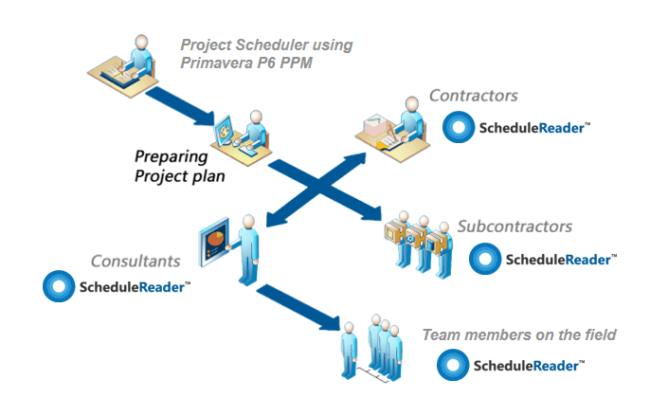
With the broader project team using the project viewer, schedulers have a more efficient alternative compared to sharing the schedule in PDF. Being able to share an approved schedule with the different internal and external project stakeholders, instead of creating various PDF copies, is a major timesaving factor.
Furthermore, with its unique Progress Update mode, ScheduleReader also enables the scheduler and the project team members on the field to better collaborate and share feedback and status updates of activities within the schedule in a controlled environment.
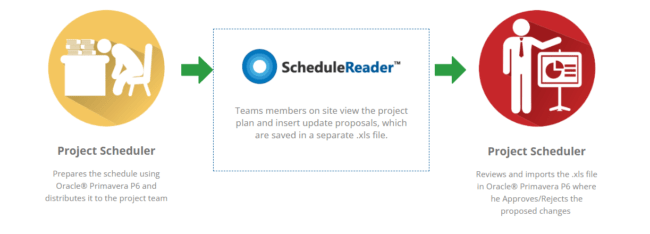
One of the main duties of the scheduler is to also support PMO, management and other stakeholder groups with different types of reports, necessary for making important decisions that drive projects forward.
The ScheduleReader software can also help schedulers in this regard. With the tool users can generate visual summaries of project information from existing schedules in the .xer and .xml file formats with a click of a button.
Different types of reports are available, including a DCMA 14 based schedule assessment report with which you can check the health and logic of a schedule, and various Activity, WBS and Project based reports and dashboards. Creation of reports with custom criteria is also supported.
ScheduleReader is available for a free-15-day trial period.
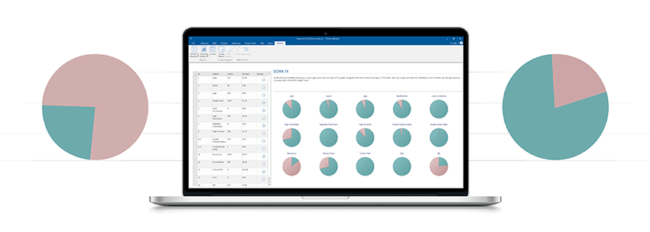
ScheduleCleaner
Data security and not revealing sensitive project related information to the wrong person when sharing schedules as files in the .xer, or the .xml file format is also an important thought to consider.
Therefore, it is recommended to use tools such as ScheduleCleaner that helps schedulers, project managers and project teams to “clean” an existing project schedule before sharing it with other stakeholders.
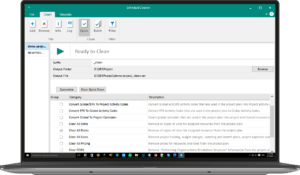
ScheduleCleaner is a software that enables users to remove, convert or anonymize different sets of data within a project schedule in the .xer and ,xml file format, such as: risks, costs, units, names, pobs data and more.
A free trial for ScheduleCleaner can be requested on their website.
Planning vs Scheduling – Is there a difference?
Although planning and scheduling are connected, dependent on and complement each other, in essence they are two vital and distinct processes of any project.
The process of planning includes defining criteria, policies and procedures required for a project to reach its objective. In contrast, the scheduling process is focused on converting the project blueprint into a schedule, actionable and operating timetable that the project participants must follow to reach the end-goal.
Project schedulers are responsible for creating the project schedules, as well as following and updating their progress as the project work is executed.
They use scheduling software and other companion tools to manage the progress of a project and communicate the status of the project with information from the schedule to all stakeholders.
In contrast, project planners focus on the larger picture and think about all aspects of a project when creating a project plan.
